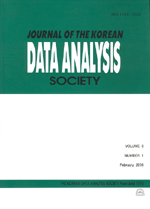The Study on Precautionary Motivation to Bank Risk Increment based on the Capital Buffer Theory: Evidence from Banks in OECD Countries
- 한국자료분석학회
- Journal of The Korean Data Analysis Society (JKDAS)
- Vol.17 No.5
-
2015.102345 - 2355 (11 pages)
- 2

This study is aiming at examining the capital buffer theory by testing the relationship between the level or the change of capital buffer and risk level with time lag. Based on the bank data in 12 Organization for Economic Cooperation and Development (OECD) countries, the empirical estimation with generalized method of moment is applied to 3-type specification model. The main results from the empirical test are as follows. First, this study shows that there exists pivotal evidence supporting the capital buffer theory suggested by Peura, Keppo (2006) and Jokipii, Milne (2011) against the moral hazard theory. Second, the profitability of banks contributes to expansion of capital buffer. Third, provision plays a role in insurance function by lowering the level of capital buffer. Fourth, as far as the asset size effect is concerned, the bigger the bank is, the lower the capital buffer is because of recapitalization option. As a result, the mechanism of precautionary motivation is available for OECD banks, and the evidence supports Konishi, Yasuda (2004) arguing that banks show the risk avert behavior if capital regulation pressure is strong.
1. Introduction
2. Theoretical backgrounds
3. Data and research methodology
4. Analysis results
5. Conclusion
References
(0)
(0)